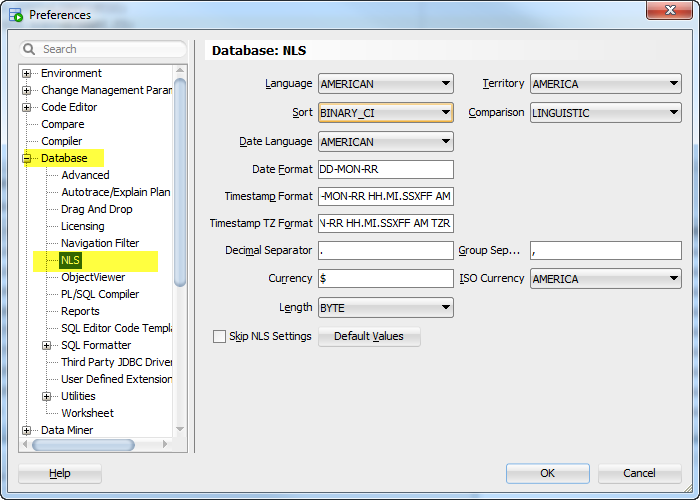

LEFT OUTER JOIN v$sql q ON (s.sql_id = q.sql_id)

SET LINES 200 PAGES 0 HEAD OFF LONG 100000 In these scenarios, you can identify the PID by querying data dictionary views, as shown here: ACCEPT active DEFAULT ’y’ PROMPT ’Active only processes y/n? : ’ In some situations, you might not know the OS process name. If you know the process name, you can use the ps command to identify the PID (as shown in the solution section of this recipe). For example, you might sometimes need to kill a long-running or hung Oracle process (e.g., RMAN, SQL*Plus, and so on). Sometimes it is necessary to use the kill command to terminate unresponsive Oracle database processes. To run the kill command, you either have to own the process or have root privileges. Note To see a list of all available types of kill signals, use the kill -l command. If you accidentally kill a required Oracle background process, your instance will abort. Ensure that you don’t kill the wrong Oracle process. You don’t see any output from the kill command because it unceremoniously removes the specified process. The -9 option sends a kill signal to the process, which causes it to terminate. To terminate that process, issue a kill command, as shown here: $ kill -9 6822 Here is some sample output: UID PID PPID C STIME TTY TIME CMD

SPID can be found in V$PROCESS view.$ ps -ef | egrep ’rman|UID’ | egrep -v egrep It will give the same very quick effect as ALTER SYSTEM DISCONNECT SESSION. Other option to kill session is to kill dedicated process on OS. IMMEDIATE – kills immediately dedicated processĪLTER SYSTEM DISCONNECT SESSION '123,34213' POST_TRANSACTION ĪLTER SYSTEM DISCONNECT SESSION '123,34213' IMMEDIATE.POST_TRANSACTION – waits for current transaction to complete, then kill dedicated process.It must be run on instance where you want to kill Oracle session. This is more effective than ALTER SYSTEM KILL SESSION because it disconnect the current session by destroying the dedicated server process (or virtual circuit if the connection was made by way of a Shared Sever). Second method is to use ALTER SYSTEM DISCONNECT SESSION ALTER SYSTEM DISCONNECT SESSION 'SID, SERIAL#' non rac kill exampleĪLTER SYSTEM KILL SESSION '123,34216' IMMEDIATE ĪLTER SYSTEM KILL SESSION SYSTEM KILL SESSION IMMEDIATE Ģ. Marked session will be killed by Oracle as soon as possible however sometimes it requires to kill dedicated process manually. If this activity is going on it can hang for a minute. First method is to use ALTER SYSTEM KILL SESSION ALTER SYSTEM KILL SESSION 'SID, SERIAL#, Ībove command marks a session as terminated, roll back ongoing transactions, release all session locks, and partially recover session resources. SELECT s.inst_id, s.sid, s.serial#, p.spidįollowing methods use sid, serial#, inst_id from view V$SESSION.ġ. GV$PROCESS – RAC databases to find spid.V$PROCESS – non RAC databases to find spid.To kill a session outside database scan following views to find dedicated server process identifier spid on OS level Guarantees that session-level commands are applied to the correct session objects if the session ends and another session begins with the same session ID Used to uniquely identify a session’s objects. GV$SESSION – used for RAC databases to find sid, serial#, inst_id.V$SESSION – used for non RAC databases to find sid, serial#.do it on OS level – kill dedicated server process for the databaseīefore you kill a session you need to scan following views to find sid, serial#, inst_id for the session.Generally there are two methods to kill a session in Oracle Database:
#Oracle kill session query how to
This article describes in short how to kill a session in Oracle Database


 0 kommentar(er)
0 kommentar(er)
